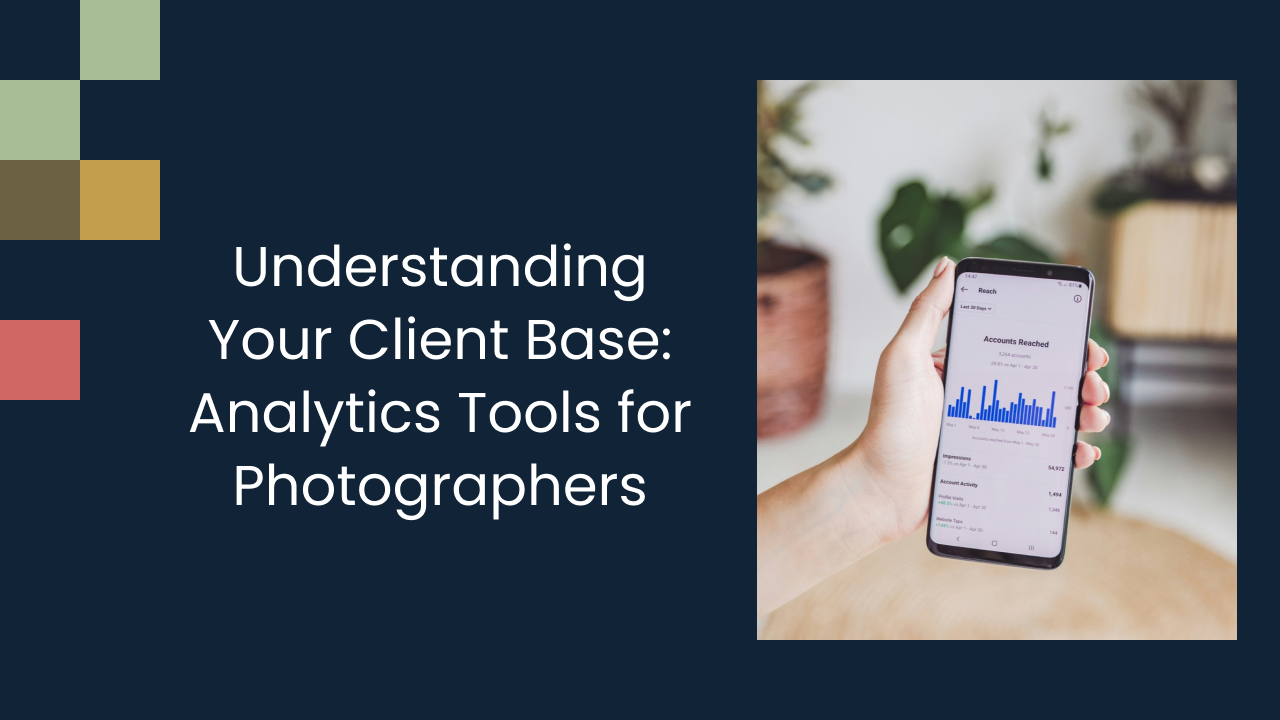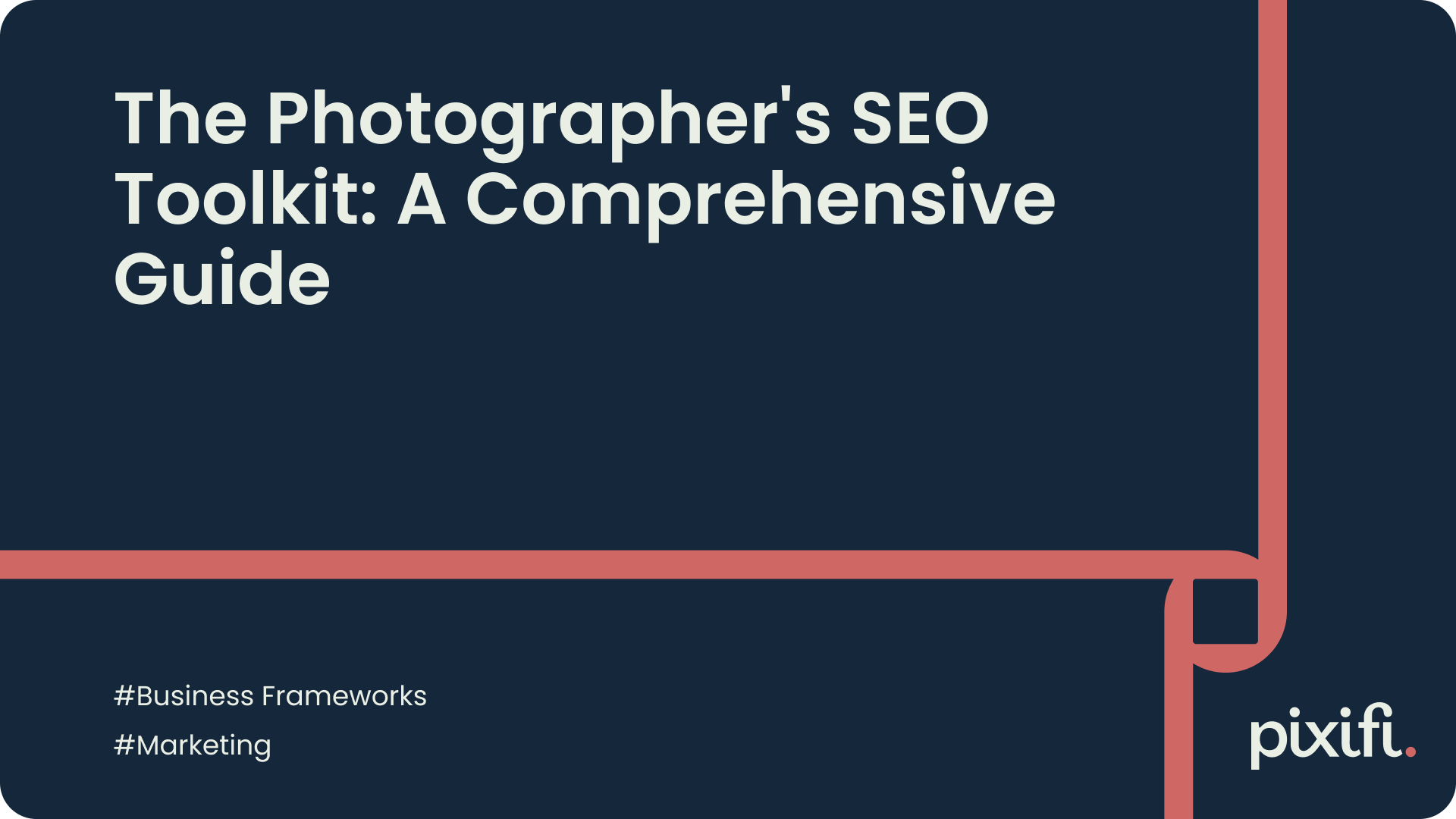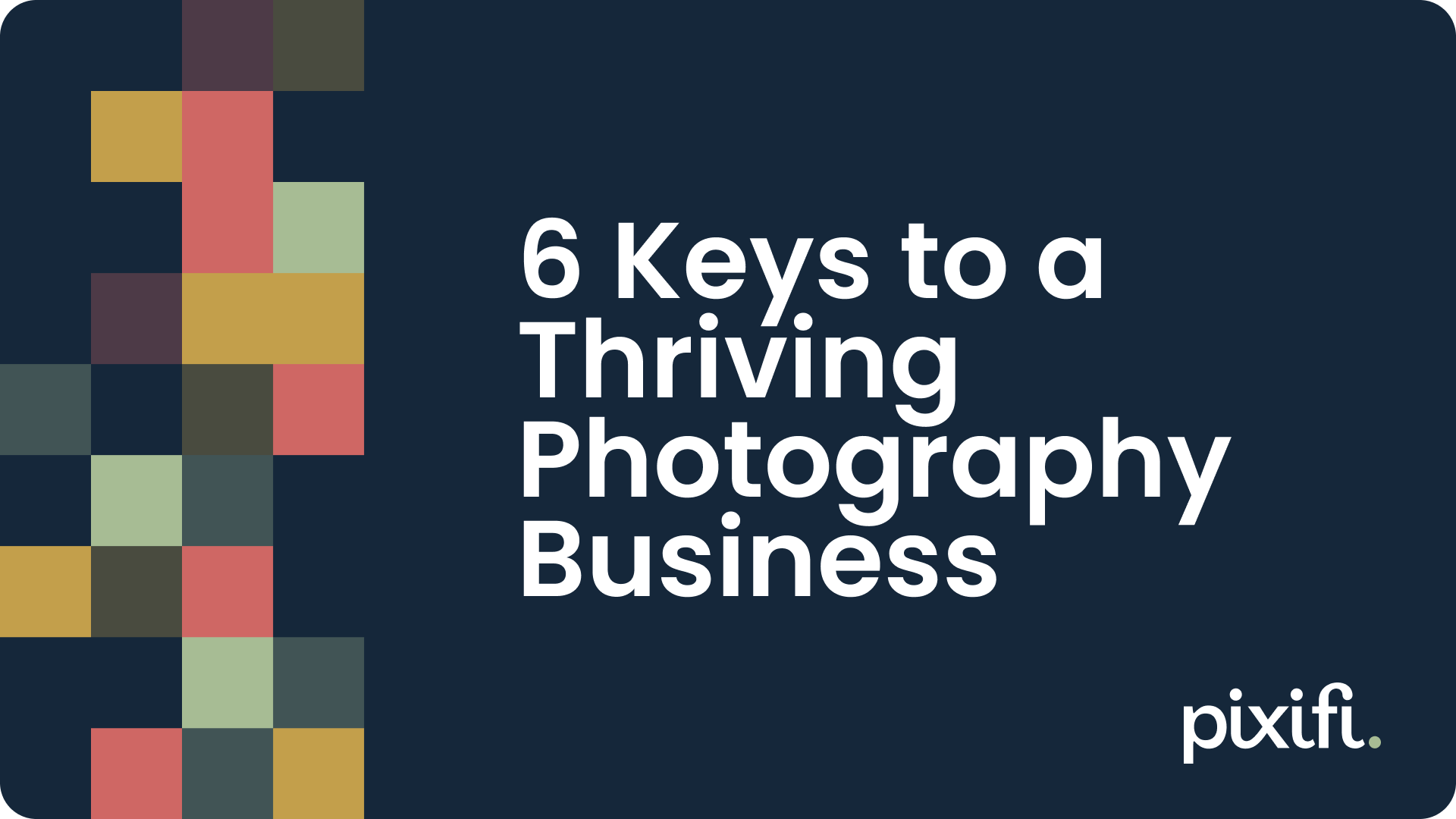Understanding Your Client Base: Analytics Tools for Photographers

In today's digital age, understanding your client base is essential for running a successful photography business. Gone are the days of blindly targeting everyone and hoping for the best. Instead, photographers must employ analytics tools to gain valuable insights into their target audience and make informed business decisions. This article will delve into the importance of understanding your client base, introduce various analytics tools available for photographers, explain how to interpret data from these tools, and provide tips for utilizing analytics to improve your photography business.
The Importance of Understanding Your Client Base
Before diving into the realm of analytics tools, it's crucial to recognize the significance of understanding your client base. Identifying your target audience is the key to tailoring your services, enhancing your marketing strategies, and predicting future trends. By knowing who your clients are, you can align your photography style, pricing, and services to cater to their specific needs and preferences.
Understanding your client base goes beyond surface-level demographics; it delves into the psychology of consumer behavior. By comprehending the motivations and desires that drive your clients, you can establish a deeper connection with them. This emotional resonance can lead to increased loyalty and word-of-mouth referrals, ultimately fueling the growth of your photography business.
Identifying Your Target Audience
Identifying your target audience involves researching and analyzing the demographics, psychographics, and behaviors of your current and potential clients. Ask yourself, who are they? What are their interests, values, and aspirations? What challenges do they face? By answering these questions, you can create customer personas that will guide your business decisions and help you attract and retain the right clients.
Moreover, understanding the evolving needs of your target audience is an ongoing process. Consumer preferences shift over time, influenced by trends, societal changes, and technological advancements. By staying attuned to these shifts through continuous market research and feedback mechanisms, you can adapt your photography business to remain relevant and competitive in a dynamic industry.
The Role of Analytics in Photography Business
Analytics plays a crucial role in understanding your client base. It provides quantifiable data that offers insights into client preferences, behaviors, and interactions. By harnessing the power of analytics, photographers can make data-driven decisions that result in more effective marketing strategies, improved customer experiences, and increased business growth.
Furthermore, analytics can uncover hidden patterns and correlations within your client data that may not be immediately apparent. These insights can help you identify untapped market segments, refine your service offerings, and personalize your marketing campaigns for higher engagement and conversion rates. Embracing analytics as a strategic tool empowers photographers to optimize their operations and drive sustainable business success.
Introduction to Analytics Tools for Photographers
Now that we understand the importance of understanding our client base, let's explore the fascinating world of analytics tools. But first, what exactly are analytics tools?
Analytics tools play a crucial role in the success of photographers by providing them with actionable insights derived from data analysis. These tools are essential for photographers looking to make informed decisions based on concrete information rather than guesswork. By leveraging analytics tools, photographers can gain a competitive edge in the industry and refine their strategies to better meet the needs of their clients.
What are Analytics Tools?
Analytics tools are software or platforms designed to collect, analyze, and interpret data. They provide photographers with valuable insights and metrics that help them understand their clients' behavior, preferences, and patterns. These tools enable photographers to track and measure key performance indicators (KPIs) that gauge the success of their marketing campaigns, website traffic, social media engagement, and more.
Moreover, analytics tools offer advanced features such as demographic analysis, conversion tracking, and real-time data monitoring. This comprehensive data-driven approach empowers photographers to make data-driven decisions that can lead to increased visibility, improved client retention, and higher profitability.
Why Photographers Need Analytics Tools
Photographers need analytics tools for several reasons. Firstly, they allow you to identify which of your marketing strategies are generating the most leads and conversions. Secondly, analytics tools help you optimize your website by revealing how visitors interact with it, such as which pages they visit, how long they stay, and what actions they take. Lastly, these tools provide valuable data that can help you enhance your customer relationships and tailor your services to meet their needs and expectations.
By harnessing the power of analytics tools, photographers can gain a deeper understanding of their target audience, refine their marketing efforts, and ultimately drive business growth. The insights provided by these tools enable photographers to adapt to changing market trends, identify new opportunities for expansion, and stay ahead of the competition in the dynamic world of photography.
Exploring Different Analytics Tools
There is a plethora of analytics tools available for photographers. Let's take a closer look at three types of analytics tools that are particularly beneficial for photographers.
As photographers delve into the world of analytics tools, they often find themselves faced with a myriad of options, each offering unique insights and benefits. In addition to the commonly known tools, there are emerging platforms that cater specifically to the photography industry, providing specialized data analysis tailored to the needs of visual content creators.
Social Media Analytics Tools
Social media platforms like Instagram and Facebook offer built-in analytics tools that provide valuable insights into your audience demographics, content performance, and engagement metrics. These tools enable you to understand which posts generate the most engagement, what time your audience is most active, and which hashtags are driving traffic to your profiles.
Furthermore, social media analytics tools have evolved to include sentiment analysis, allowing photographers to gauge the emotional responses elicited by their posts. This deeper understanding of audience reactions can inform content creation strategies and help photographers tailor their messaging to resonate more effectively with their followers.
Website Analytics Tools
Website analytics tools like Google Analytics allow you to track and measure various website metrics such as total visitors, page views, bounce rates, and conversion rates. They provide valuable data on user behavior, allowing you to optimize your website for a better user experience.
Moreover, advanced website analytics tools now offer heatmapping capabilities, giving photographers a visual representation of where users are clicking and scrolling on their websites. This visual data can be instrumental in redesigning website layouts for improved navigation and conversion rates.
Customer Relationship Management (CRM) Analytics
CRM analytics tools are designed to help photographers manage their client relationships effectively. They provide insights into client preferences, past purchases, and interactions, allowing you to personalize your offerings and offer tailored experiences to your clients.
Additionally, CRM analytics tools now integrate machine learning algorithms to predict client behavior and preferences, empowering photographers to anticipate their clients' needs and proactively offer customized services. By harnessing the power of predictive analytics, photographers can foster stronger client relationships and drive business growth.
Interpreting Data from Analytics Tools
Now that we are familiar with different types of analytics tools, let's explore how to interpret the data they provide. Understanding how to effectively analyze and interpret data is crucial for leveraging the full potential of analytics tools.
One important aspect of interpreting data is recognizing the context in which the data is collected. For instance, website bounce rates may vary based on the type of industry or target audience. By understanding the context, businesses can make more informed decisions and tailor their strategies accordingly.
Understanding Key Metrics
Each analytics tool provides various metrics, and understanding these metrics is essential for making data-driven decisions. From website bounce rates to social media engagement rates, it's important to identify the metrics that align with your business goals and monitor them regularly. By setting specific key performance indicators (KPIs) and tracking them over time, businesses can measure their progress and adjust their strategies as needed.
Furthermore, it's crucial to differentiate between vanity metrics and actionable metrics. Vanity metrics, such as total website visits, may look impressive but do not provide meaningful insights. On the other hand, actionable metrics, such as conversion rates and customer acquisition costs, offer valuable information that can drive business decisions.
Making Sense of Data Visualizations
Data visualizations, such as charts and graphs, help photographers make sense of complex data. These visual representations simplify information and make it easier to identify trends, patterns, and areas for improvement. By analyzing data visualizations, photographers can uncover actionable insights that drive business growth.
When interpreting data visualizations, it's essential to consider the design and clarity of the visuals. Clear and well-designed charts can enhance understanding and facilitate communication within the organization. Additionally, utilizing interactive visualizations can provide a more engaging experience for users, allowing them to explore the data in a dynamic and interactive way.
Utilizing Analytics to Improve Your Photography Business
Now that we understand how to interpret data from analytics tools, let's explore how to utilize these insights to improve your photography business.
Tailoring Your Services Based on Client Insights
Analytics tools provide valuable insights into client preferences and behaviors. By analyzing this data, photographers can tailor their services to meet their clients' specific needs and expectations. For example, if analytics reveal that a significant portion of your clients are interested in outdoor photography, you can focus your marketing efforts on promoting your outdoor sessions and develop specialized packages.
Enhancing Marketing Strategies with Analytics
Analytics tools can significantly impact your marketing strategies. By understanding which marketing channels and campaigns are most successful, photographers can allocate their resources more effectively. For instance, if analytics show that social media campaigns generate a higher return on investment than print ads, you can reallocate your marketing budget accordingly.
Predicting Future Trends with Analytics
Analytics tools provide historical data that can be used to predict future patterns and trends. By analyzing past data, photographers can identify emerging market trends, anticipate client demands, and stay ahead of the competition. This allows photographers to adapt their business strategies and offerings to cater to future client needs proactively.
In conclusion, understanding your client base is vital for running a successful photography business. By utilizing analytics tools, photographers can gain valuable insights into their target audience, interpret data effectively, and navigate their business decisions accordingly. By tailoring services based on client insights, enhancing marketing strategies, and predicting future trends with analytics, photographers can build prosperous businesses and establish lasting connections with their clients.
Looking for an easier way to manage and grow your studio? Experience a platform built by a photographer, for photographers. Try it free for 2 weeks.











